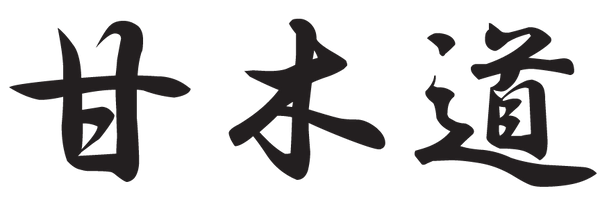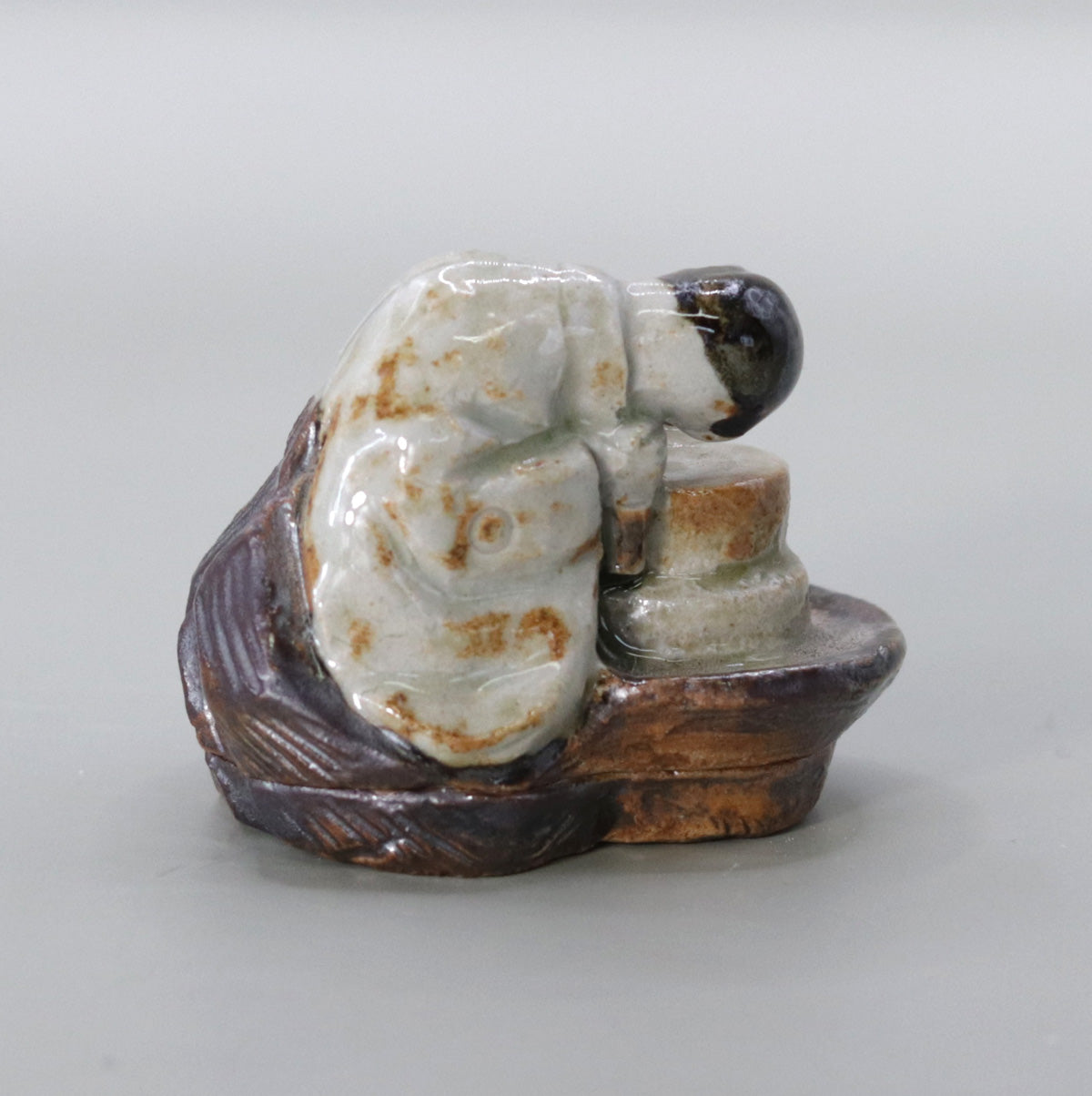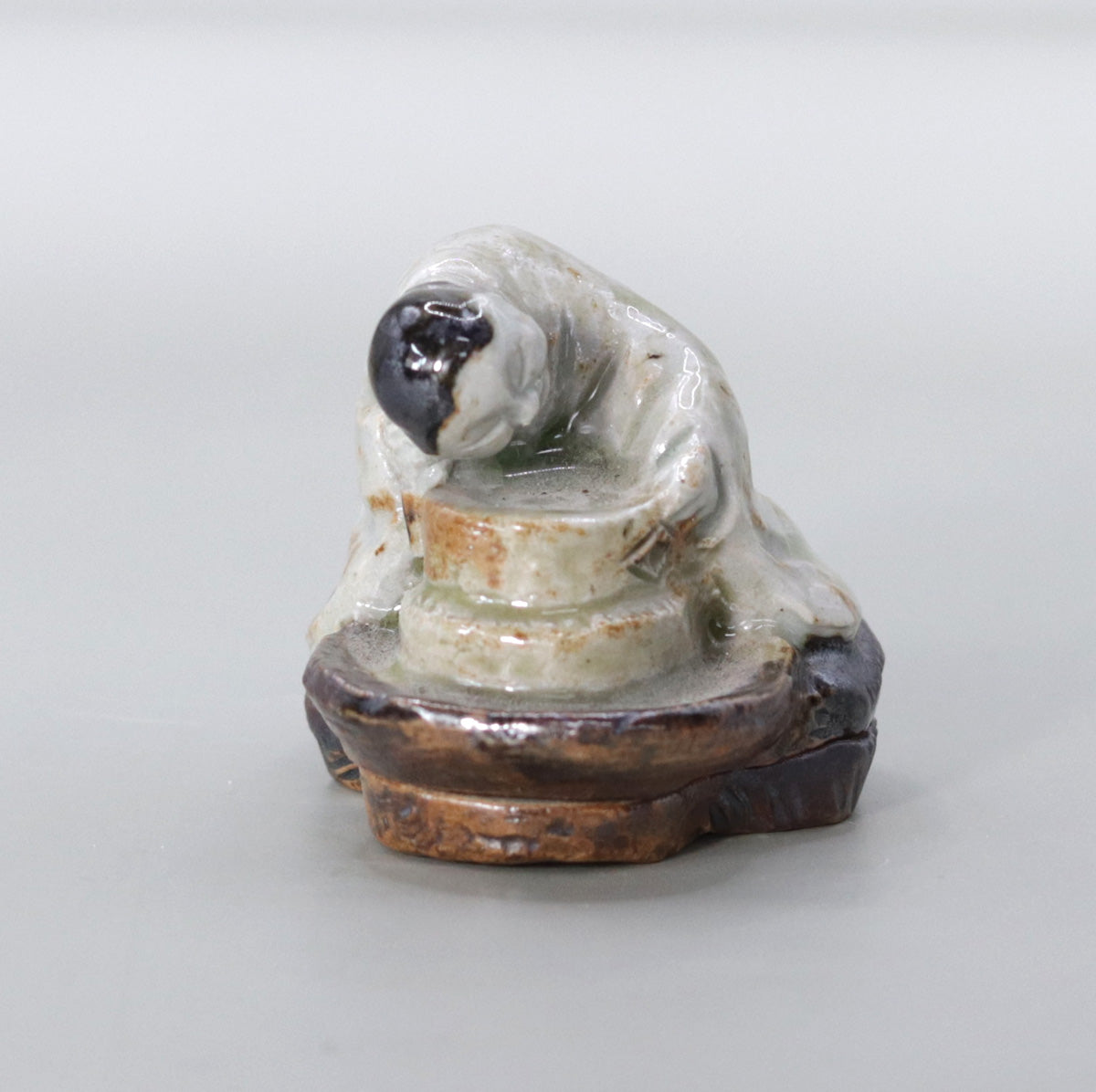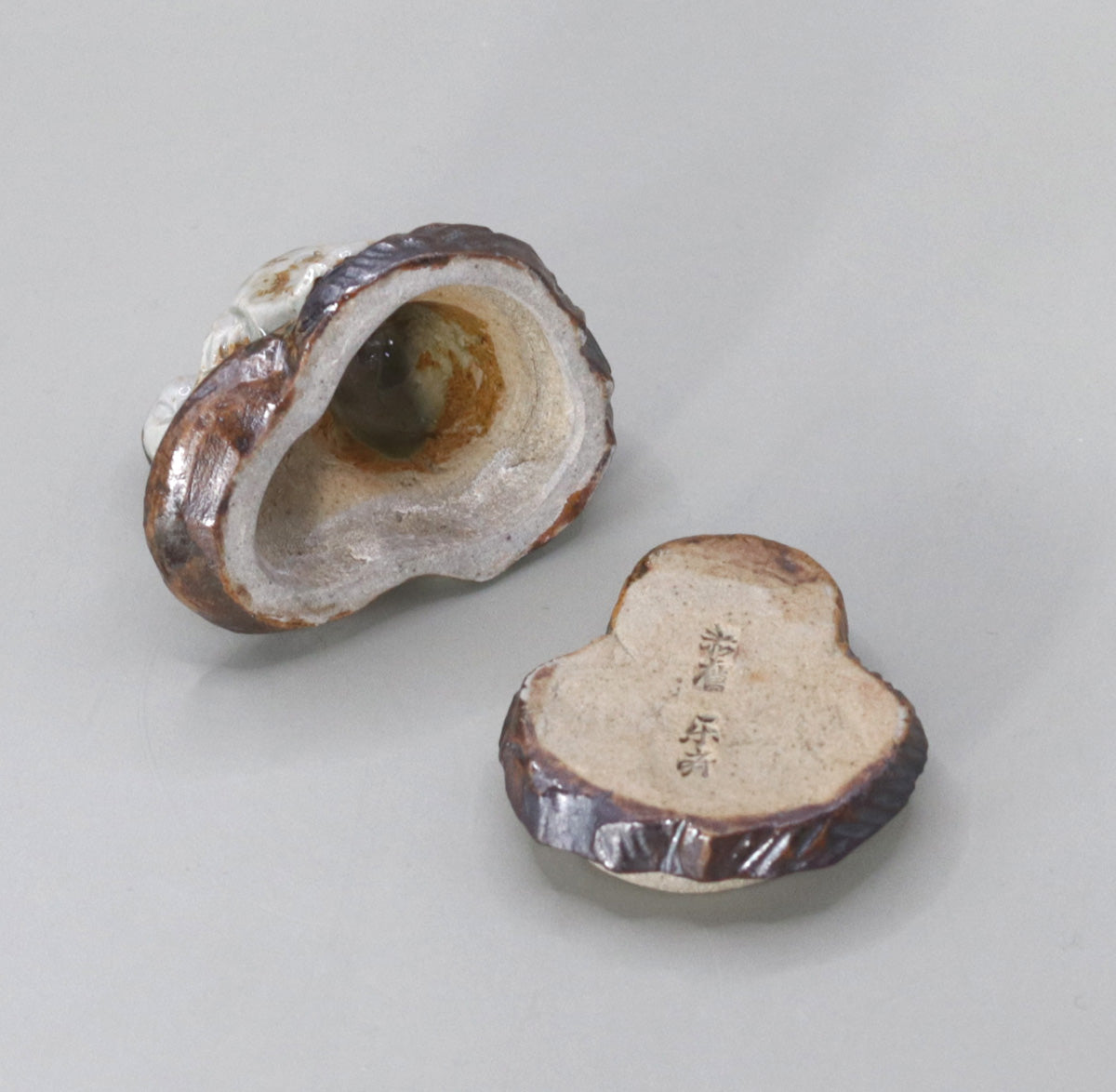Tea grinding incense holder by Rakusai Onishi
Tea grinding incense holder by Rakusai Onishi
Couldn't load pickup availability
Width: 6.0cm x 5.0cm Height: 4.7cm
Tea grinding incense holder - Onishi Rakusai
Work summary
This incense container is based on the image of someone grinding tea leaves in a stone mill. The figure on top is the lid, while the mill and base are the body, and when the two are combined they form a complete sculpture. With the light and subtle design and soft glaze tones that are unique to Onishi Rakusai, the act of grinding tea leaves, which can be said to be the origin of the tea ceremony, is elevated to an objet d'art filled with warmth.
1. Design: Reflecting the "original landscape of tea"
Figures <br data-start="235" data-end="238">The monk (or maid) bent over and turning the millstone is realistically depicted, while the face and hands are delineated with minimal brushstrokes, encouraging the viewer's imagination.
The mortar and base board <br data-start="316" data-end="319">The mortar is cylindrical and the base board is boat-shaped, and when the lid is closed they come together to form what appears to be a small table. This is also a symbol of "grinding incense = releasing the fragrance," and overlaps the action of grinding tea with the gesture of burning incense.
Appearance <br data-start="426" data-end="429">The stable silhouette with the entire piece positioned low gives it a sense of calm when placed on a tokonoma or side alcove.
2. Glaze and coloring: the contrast between soft white and iron spots
Figure section <br data-start="520" data-end="523">This piece is covered in a milky white glaze mainly made of feldspar, and given a pale blue hue by reduction firing. Iron flecks that appear here and there create a look that is reminiscent of the antique color of a white robe.
Mortar and base board <br data-start="604" data-end="607">A thin layer of brown iron glaze is applied to express the texture of wood and its age. The slight sheen is reminiscent of damp ash, visually reinforcing its function as an incense holder.
3. Technique: A harmony of hand-twisting and low-temperature overglaze painting
Hand-formed as a single piece <br data-start="720" data-end="723">The figure and mortar are molded into one piece from a lump of rough clay, and after drying, they are cut into saw-like pieces to create the lid, using the "waridashi" technique.
Brushing on white makeup <br data-start="794" data-end="797">The white mud applied to the surface of the base shrinks in places during firing, creating the texture of antique pottery.
Low-temperature overglaze <br data-start="859" data-end="862">Iron glaze is applied in dots to the hair and eyes and then cured at 750-800°C, giving the piece a gentle luster that is less likely to peel off.
4. Combinations at tea ceremonies: Widely suited to the season and taste
Early Spring to the New Tea Harvest <br data-start="970" data-end="973">By featuring the scene of "grinding tea" during the season when the tea leaves sprout, the idea of celebrating the "new aroma" is highlighted.
Koicha tea ceremony <br data-start="1033" data-end="1036">This goes well with the idea of "kouawasew," which uses finely crushed agarwood and kyara wood instead of matcha, and echoes the action of kneading the tea.
Conversation seeds <br data-start="1101" data-end="1104">By telling your guests anecdotes such as "before powdered tea was introduced into the tea ceremony, tea was ground in a mortar," you can naturally get the conversation flowing.
5. Cultural and symbolic significance
In the history of the tea ceremony, the act of grinding tea leaves in a stone mill is deeply connected to the medicine stones and training of Zen temples. The smell of incense is also a part of the training to harmonize the mind and body. This incense container embodies the two "grinding" actions, bringing the symbols of "study" and "purification" to the troupe. With soft realism and pale colors, Onishi Rakusai has deliberately transformed the rigorous training into a familiar image, bringing a peaceful atmosphere to the modern tea room.
A monk with iron flecks on his white robes quietly turns the mortar, and the incense container emits a pure fragrance -- the "Tea Grinding Incense Container" by Onishi Rakusai is a rare tool that speaks of tea and fragrance, training and harmony, all at the same time. Place it on the floor and it will quietly draw the attention of your guests, and when you inhale the incense, the original landscape of tea from time immemorial will gently emerge.
A conversation with Rakusai Onishi – High-end pottery specialty store [Amagi-do]
Share
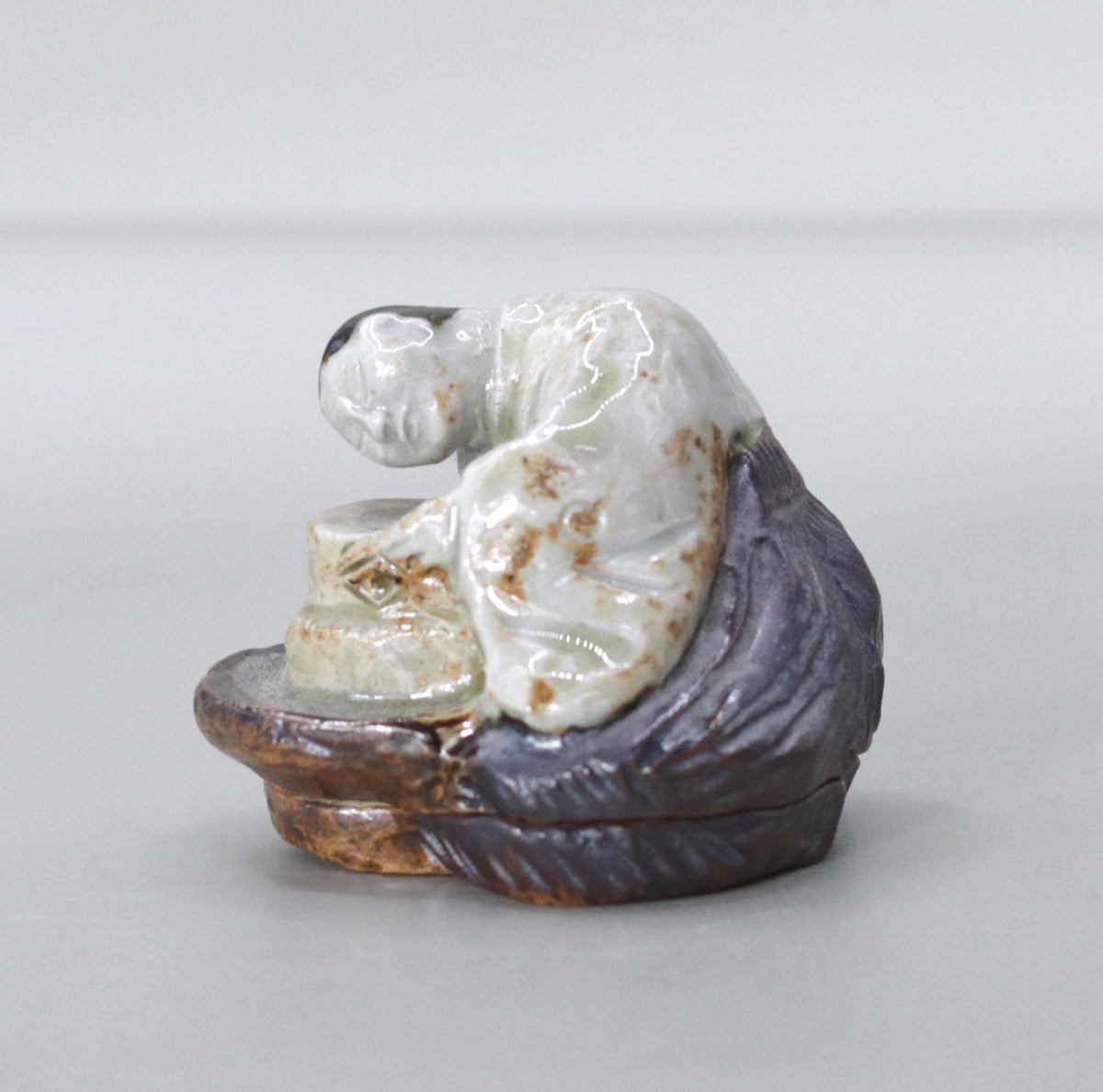
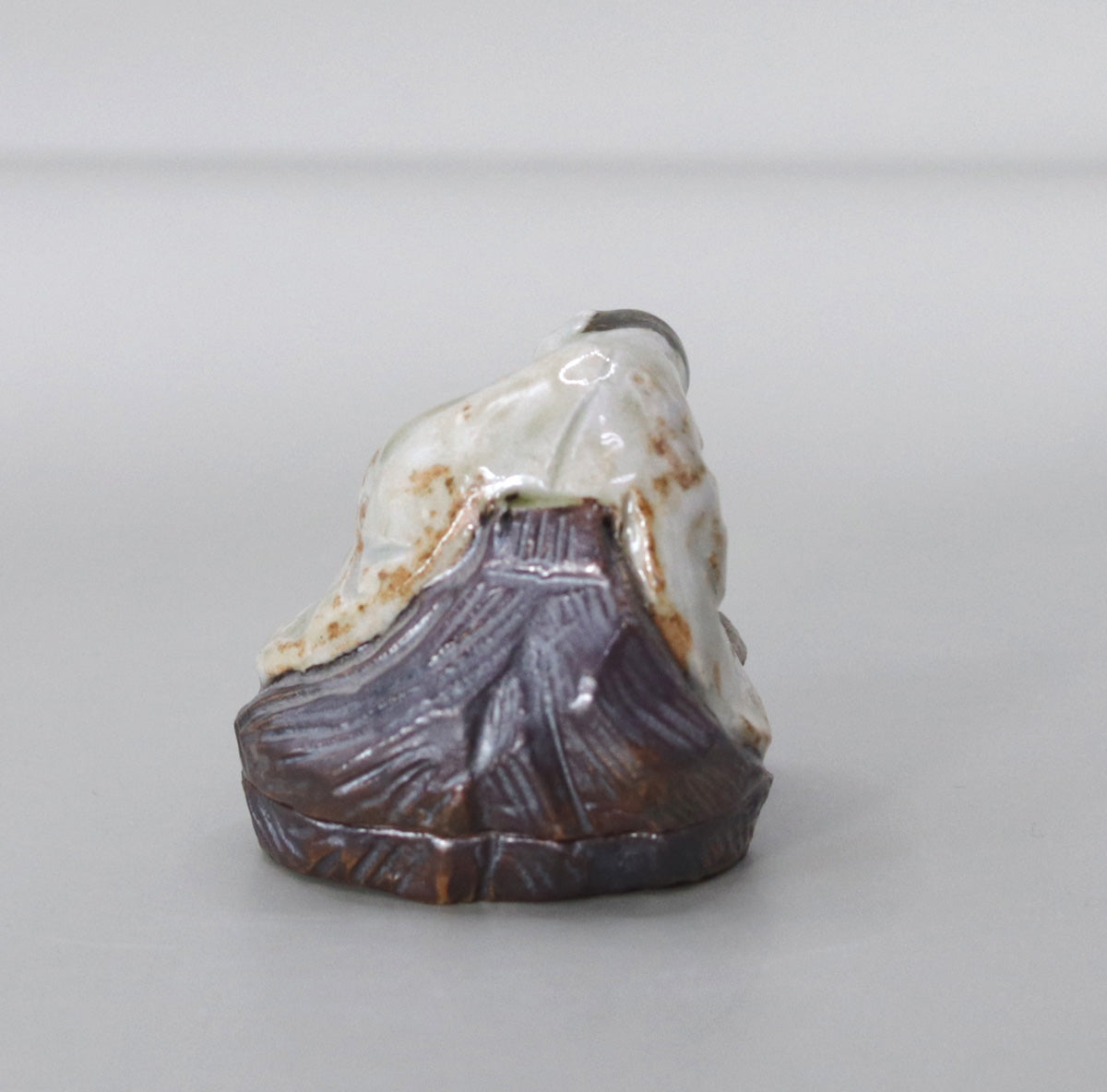



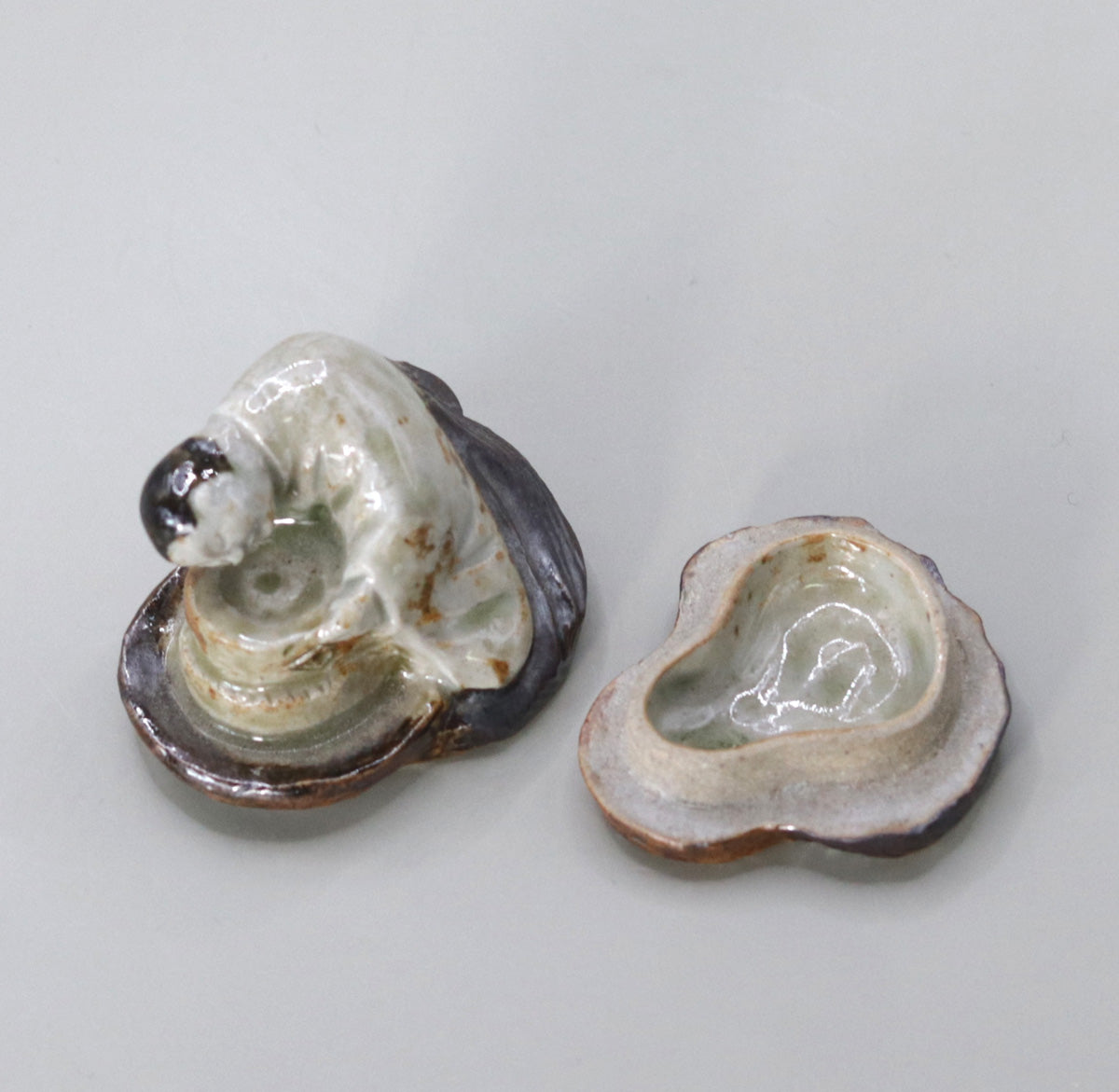

Multi-Column
-
[I will send it to you quickly and carefully]
We carefully package each product in a way that suits it best.
Also, delivery times vary depending on the piece (vessel, etc.).
Items that already come with a box will be shipped within 1-3 days of the order date.
For items that require a box to be made after your order, it will take approximately 30 days for production to be completed and then shipped.
In either case, once we have confirmed your order, we will contact you by email to inform you of the delivery date.
-
[Requests when purchasing pottery]
Even products that look the same may differ slightly in color, shape, size, etc.
The way the glaze is used, the power of the kiln, the firing method, the season, and the humidity also affect the appearance of the pottery.
Please understand the individuality of each piece of pottery and enjoy the unique warmth of handmade.
